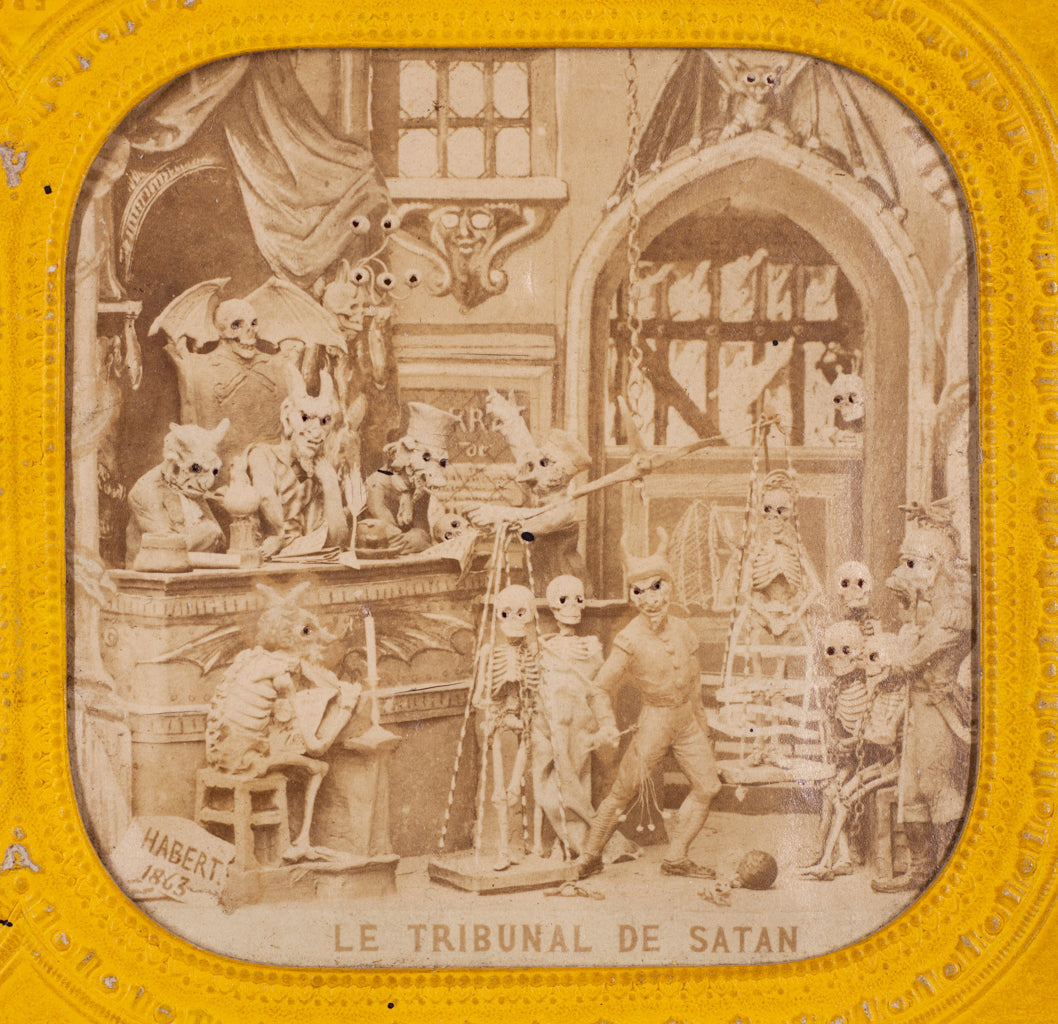
Diableries augmentées | Révélations Méliès
Collaboration Petermfriess, Olivier Guyaux, and Dan Zhu
Diableries augmentées is an artwork where Georges Méliès’s stereoscopic visions are reinterpreted by a contemporary artistic approach. These nineteenth-century cards, with their dancing skeletons, satirical devils, and decaying underworlds present death never a finality, but a portal. It is a symbolic theatre where the veil between visible and invisible is thinned and offers a passage into hidden dimensions. Collection Fonds Alain Roch
Méliès’s Diableries, born of an age filled with occult revivals, theosophy, and imaginings, are viewed through the new optics of artificial intelligence. Artificial Intelligence acts as both medium and alchemist, divining patterns in the shadows, uncovering unconscious traces, animating what had been still. As in nineteenth-century séances, where ectoplasm and manipulated photographs became conduits for spirit contact, today’s algorithms conjure archetypal figures: the skeletal crowd, the grotesque trickster, the devil presiding over infernal theatre.
Once the stereoscope revealed a hidden third dimension, invisible to the naked eye; so too does AI render new dimensions from the archive. This spatial resonance recalls the interferences in a visual space, where light rays are pulsating together. What stereoscopy achieves optically, AI extends computationally – surfacing unseen relations, conjuring latent geometries, and generating new perceptual chords. Each Diablerie becomes fluid and alive, accompanied by soundscapes that breathe with mysterious vitality. Sudden visual eruptions recall the mutability of spirit voices, as if the archive itself were possessed by something beyond the sum of its fragments.
Created with the aid of artificial intelligence, the work examines each stereoscopic card through artificial lenses and ears, inviting the machine to reveal invisible motifs and narrative undercurrents and then transfiguring the still images into animated dreamscapes. The visual experience is allied with a soundtrack drawing inspiration from Félix de Godefroid’s La voix des songes (1880) to compose an organic extension that carries the viewer deeper into the labyrinth of infernal revelations.
In this sense, Diableries augmentées as artwork is based on a genealogy of thanotechnologies – instruments that mediate between the living and the dead. In contrast to much of today’s digital replicas of individuals (chatbots, holograms, digital twins), here the hauntings are collective, symbolic, and allegorical. Méliès’s infernal theatre vibrates with echoes of occult imagery, and Diableries augmentées becomes another resonant body, amplifying archetypes and reviving unconscious strata.
The work resonates with contemporary notions of postmortem life, where data, bodies, and images persist beyond their temporal bounds. This is a double alchemy: first, Méliès’s own, transmuting death into spectacle and satire; then the algorithmic alchemy of AI, transmuting stillness into motion and silence into resonance. Over time, the resonance itself shifts: just as silver-cotton prints deepen their timbre with age, so too do AI models acquire new patinas as they are retrained. Past and present technologies echo across one another, producing harmonics that neither could sustain alone.
For the viewer, the experience is not passive. Each tableau is a threshold, a portal into an ecology of shadows where technologies of the past converse with those of the present, where occult humour meets digital sorcery. To watch is to join an initiation—guided through infernal architectures, immersed in a poetic archaeology of hidden spirits, and invited to consider that the dead are never silent, only shifting forms.
The artwork is on display at Tiny Gallery Brussels until spring 2026, in parallel to the major presentation Grand Art in Photography – Symbolism, Esotericism, Occultism (1860–1918): Photography in the Art Nouveau Period produced in collaboration with Maison Hannon.
